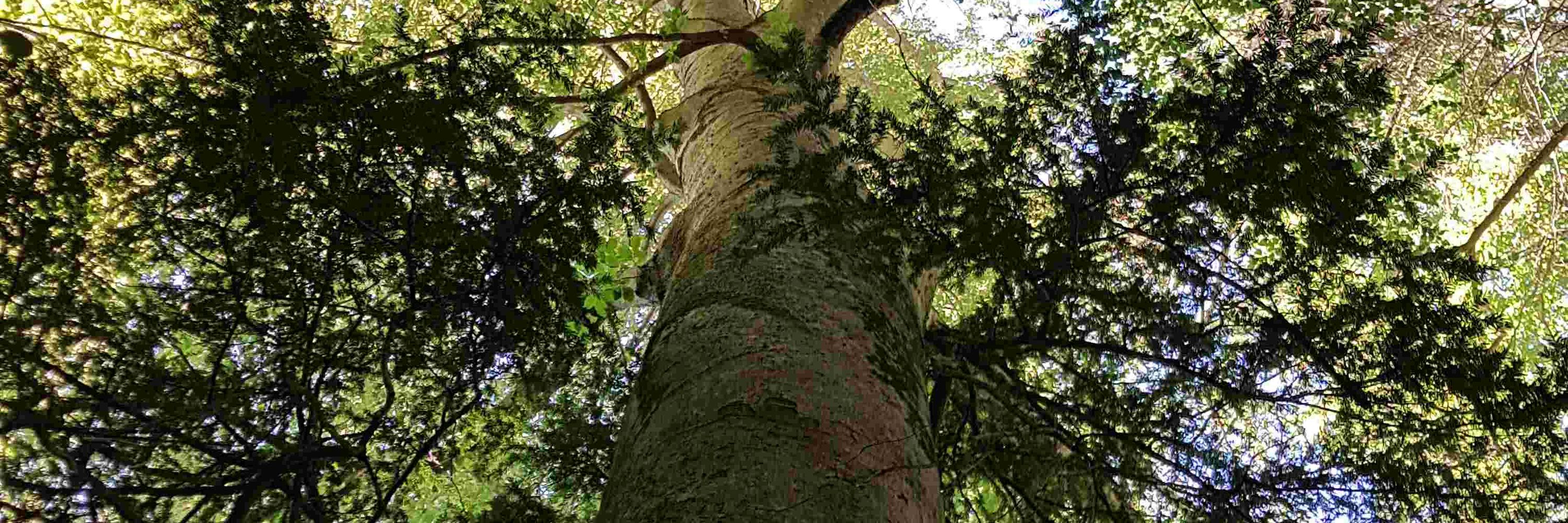
Xavier Morin
@xaviermorin.bsky.social
Chercheur CNRS en écologie forestière au CEFE
CNRS Researcher in forest ecology at the CEFE
CNRS Researcher in forest ecology at the CEFE
and of course a great collaborative effort
@cnrsecologie.bsky.social @martin-stpaul.bsky.social @mcuntz.bsky.social
@hcochard.bsky.social @e-joetzjer.bsky.social @julienruffault.bsky.social (among others)
@cnrsecologie.bsky.social @martin-stpaul.bsky.social @mcuntz.bsky.social
@hcochard.bsky.social @e-joetzjer.bsky.social @julienruffault.bsky.social (among others)
October 23, 2025 at 4:17 PM
and of course a great collaborative effort
@cnrsecologie.bsky.social @martin-stpaul.bsky.social @mcuntz.bsky.social
@hcochard.bsky.social @e-joetzjer.bsky.social @julienruffault.bsky.social (among others)
@cnrsecologie.bsky.social @martin-stpaul.bsky.social @mcuntz.bsky.social
@hcochard.bsky.social @e-joetzjer.bsky.social @julienruffault.bsky.social (among others)
I think there is a general pattern out there...
January 8, 2025 at 7:58 PM
I think there is a general pattern out there...
These results open up new perspectives for forestry policies, by highlighting an overlooked advantage of mixed species over pure stands.
(Note that there is also many side results in the maoin text + appendices)
We hope you'll like the paper! 7/7
(Note that there is also many side results in the maoin text + appendices)
We hope you'll like the paper! 7/7
January 6, 2025 at 5:35 PM
These results open up new perspectives for forestry policies, by highlighting an overlooked advantage of mixed species over pure stands.
(Note that there is also many side results in the maoin text + appendices)
We hope you'll like the paper! 7/7
(Note that there is also many side results in the maoin text + appendices)
We hope you'll like the paper! 7/7
2- The effect of the number of species on productivity can be up to 10 times greater when stand density can vary as a function of species composition (shown through an extensive simulation experiment using a forest dynamics model). 6/7
January 6, 2025 at 5:35 PM
2- The effect of the number of species on productivity can be up to 10 times greater when stand density can vary as a function of species composition (shown through an extensive simulation experiment using a forest dynamics model). 6/7
Here we report two main findings:
1- When a forest contains more species, it contains more trees on average (shown by analysing the national forest inventories of 6 countries : Finland, Sweden, Germany, Wallonia, France, Spain). To do so we relied on assessing self-thinning lines. 5/7
1- When a forest contains more species, it contains more trees on average (shown by analysing the national forest inventories of 6 countries : Finland, Sweden, Germany, Wallonia, France, Spain). To do so we relied on assessing self-thinning lines. 5/7
January 6, 2025 at 5:35 PM
Here we report two main findings:
1- When a forest contains more species, it contains more trees on average (shown by analysing the national forest inventories of 6 countries : Finland, Sweden, Germany, Wallonia, France, Spain). To do so we relied on assessing self-thinning lines. 5/7
1- When a forest contains more species, it contains more trees on average (shown by analysing the national forest inventories of 6 countries : Finland, Sweden, Germany, Wallonia, France, Spain). To do so we relied on assessing self-thinning lines. 5/7
= The possible role of processes visible at the stand level, such as the change in maximum tree density, has been ignored, or at best neglected. For example, most of the BEF experiments carried out on this question compare plots with fixed densities. 4/7
January 6, 2025 at 5:35 PM
= The possible role of processes visible at the stand level, such as the change in maximum tree density, has been ignored, or at best neglected. For example, most of the BEF experiments carried out on this question compare plots with fixed densities. 4/7
We know that mixed forests are on average more productive than monospecific ones.
Yet, the mechanisms proposed to explain this diversity-productivity link in forests have essentially focused on how the growth of individual trees is impacted by their direct neighbourhood (monospecific vs mixed) 3/7
Yet, the mechanisms proposed to explain this diversity-productivity link in forests have essentially focused on how the growth of individual trees is impacted by their direct neighbourhood (monospecific vs mixed) 3/7
January 6, 2025 at 5:35 PM
We know that mixed forests are on average more productive than monospecific ones.
Yet, the mechanisms proposed to explain this diversity-productivity link in forests have essentially focused on how the growth of individual trees is impacted by their direct neighbourhood (monospecific vs mixed) 3/7
Yet, the mechanisms proposed to explain this diversity-productivity link in forests have essentially focused on how the growth of individual trees is impacted by their direct neighbourhood (monospecific vs mixed) 3/7
Why special? ▶️ 1) the idea came out more than 12 yr ago, 2) testing it required adapting a complete forest dynamics model (which took time) and carrying out numerous simulations (which also took time..), 3) a collaboration with a great team eg. @joguillemot.bsky.social @riottelambert.bsky.social 2/7
January 6, 2025 at 5:35 PM
Why special? ▶️ 1) the idea came out more than 12 yr ago, 2) testing it required adapting a complete forest dynamics model (which took time) and carrying out numerous simulations (which also took time..), 3) a collaboration with a great team eg. @joguillemot.bsky.social @riottelambert.bsky.social 2/7

